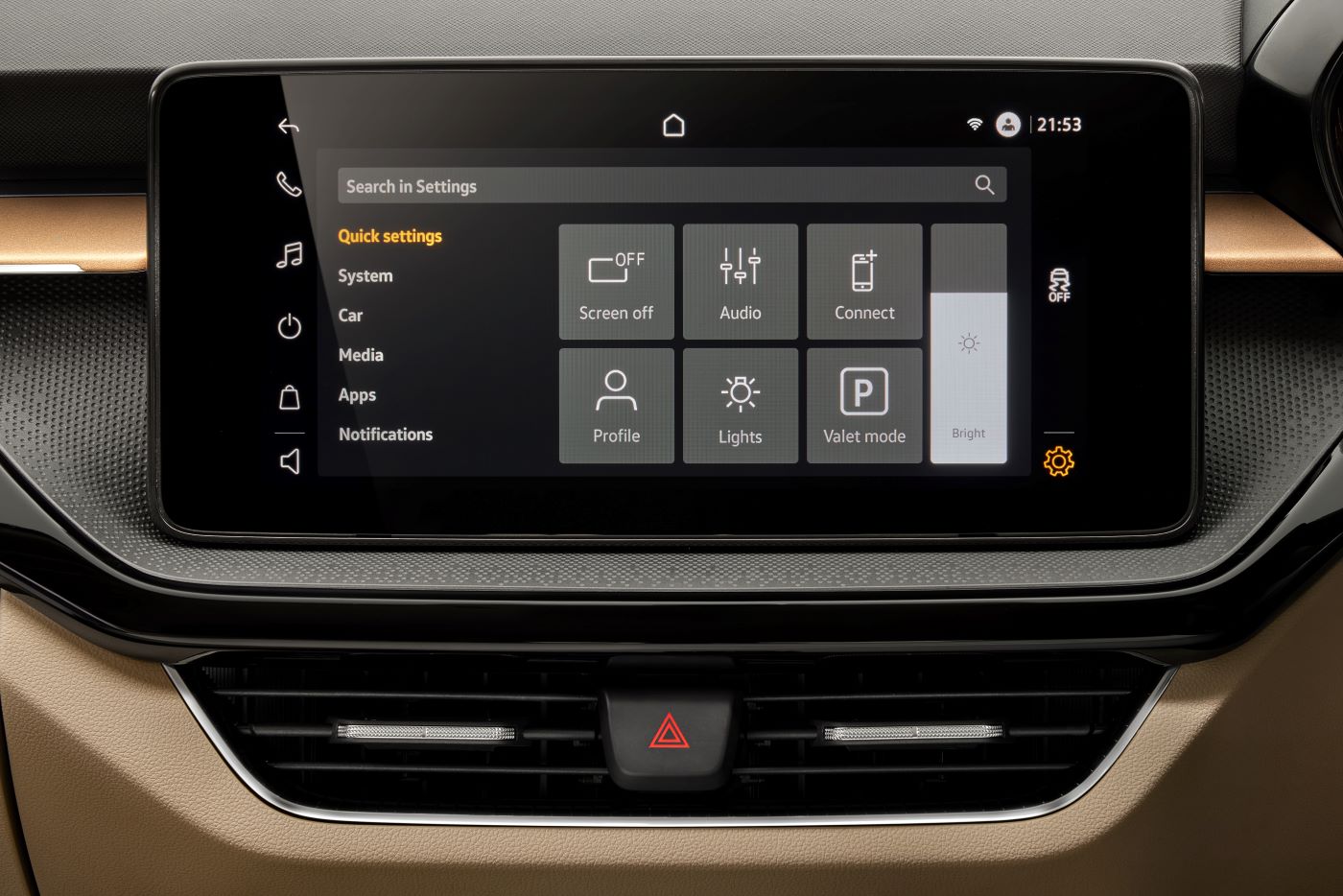The best in-car infotainment system isn’t necessarily the one with the largest screen or the most dazzling interface.
Often, a more compact display complemented by physical controls and strategically placed buttons provides a better driving experience than screens overloaded with flashy visuals designed to impress shoppers.
Completing tasks with fewer clicks is a major advantage, and having multiple input methods such as a well-placed rotary knob can elevate an infotainment system from good to outstanding.
Additionally, responsiveness and a modern aesthetic are essential. With high standards and plenty of options available, this list highlights the 10 best infotainment systems for 2025, along with the specific vehicles they enhance.
1. Stellantis UConnect 5
- Vehicles: Ram 1500
UConnect 5 delivers an exceptional experience in most Stellantis vehicles, but it shines brightest in the Ram 1500 equipped with the available 14.0-inch vertically oriented touchscreen.
Its tile-based layout enables multiple apps to be displayed simultaneously, making information easily accessible at a glance.
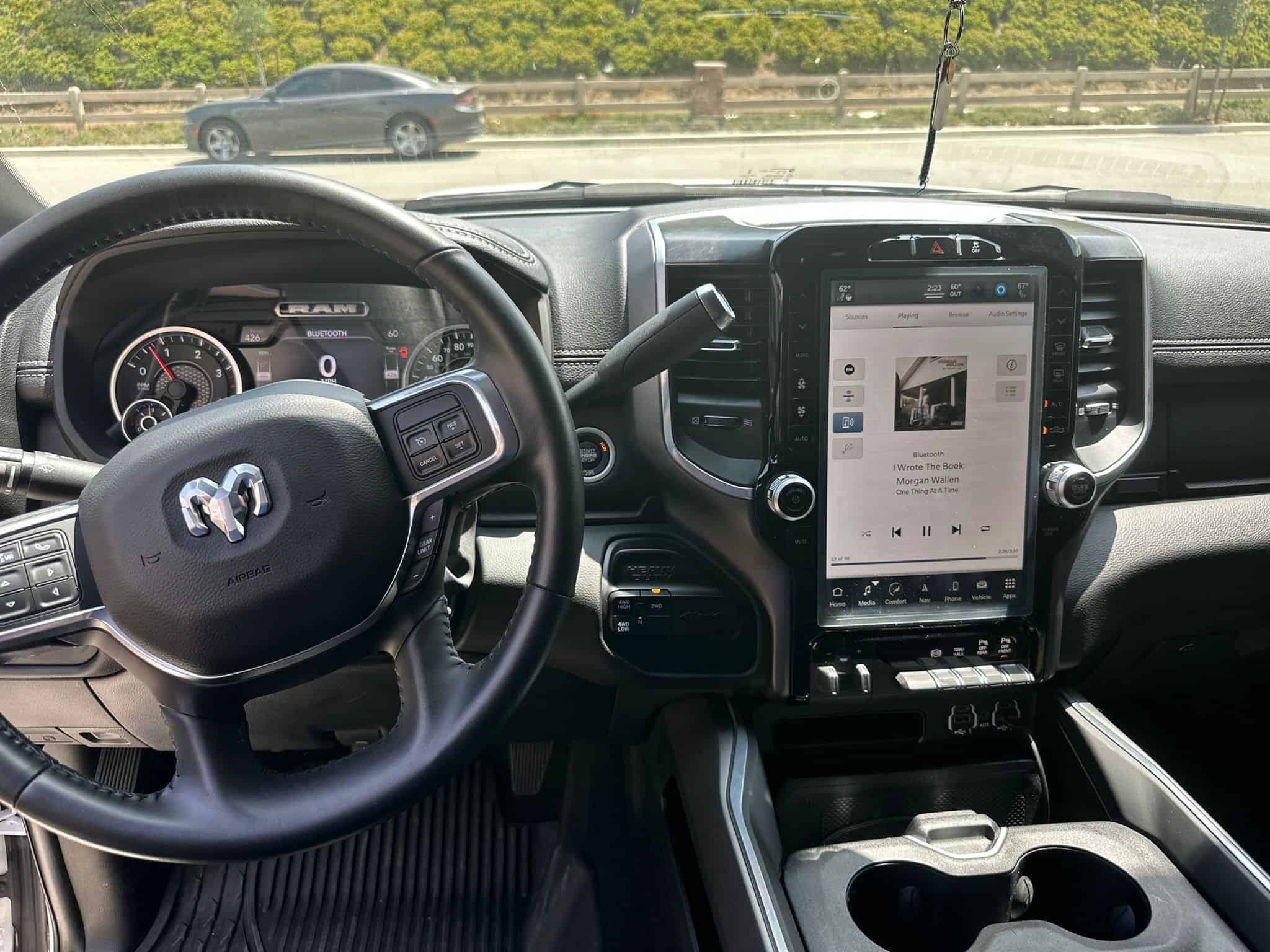
A standout feature is the ability to use Apple CarPlay or Android Auto alongside native infotainment apps without the need to toggle between screens.
Additionally, the presence of hard buttons and knobs for climate control next to the display adds to its ease of use.
The interface is visually appealing, the screen responds quickly to inputs, and an optional passenger display allows for movie streaming and other entertainment functions.
Also Read: 10 Vehicles That Offer the Best Resale Value Over a Decade
2. BMW iDrive 8.5
- Vehicles: BMW 2-Series, 3-Series, 4-Series, 5-Series, 7-Series, X5, X6, X7, iX
This isn’t just residual praise for iDrive 8 what makes iDrive 8.5 truly stand out are the refinements, such as additional hotkey shortcuts and a reduction in system bugs.
The signature “Curved Display,” which integrates a 12.3-inch digital instrument cluster and a 14.9-inch touchscreen, is featured in all of these models, offering stunning visuals, crisp graphics, and responsive touch functionality.
However, what secures iDrive’s place on this list is the continued inclusion of the iDrive rotary knob, which provides an alternative to using the touchscreen.
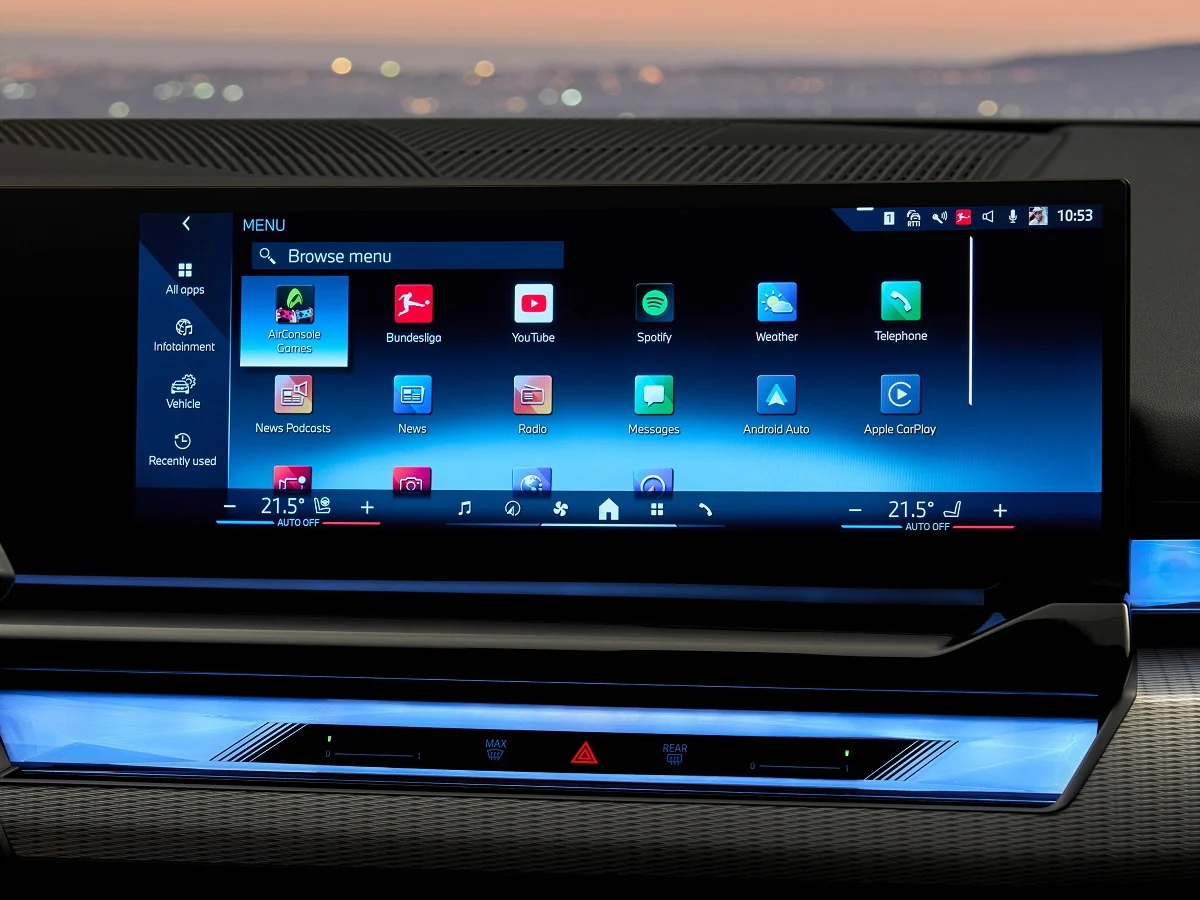
In many situations, it’s easier and safer to remain seated comfortably while tilting or scrolling to the desired menu. Additionally, BMW has placed shortcut buttons around the knob, allowing quick access to navigation, media, and driver-assistance settings.
While the general “app drawer” can feel cluttered at first, navigating the system becomes much more intuitive once users become familiar with its layout.
3. Toyota/ Lexus Multimedia System
- Vehicles: Toyota Sequoia, Toyota Tundra, Lexus TX, Lexus RX, Lexus GX
Toyota employs the same multimedia software across most of its lineup, but the best experience comes with the large 14.0-inch screen available in these specific models.
The Toyota Multimedia System delivers a clean, straightforward infotainment experience that avoids unnecessary complexity while still offering premium functionality.
In vehicles without physical climate controls (such as the GX and RX), essential climate functions are conveniently pinned to the bottom of the screen, and the integrated temperature adjustment knobs provide an intuitive touch.
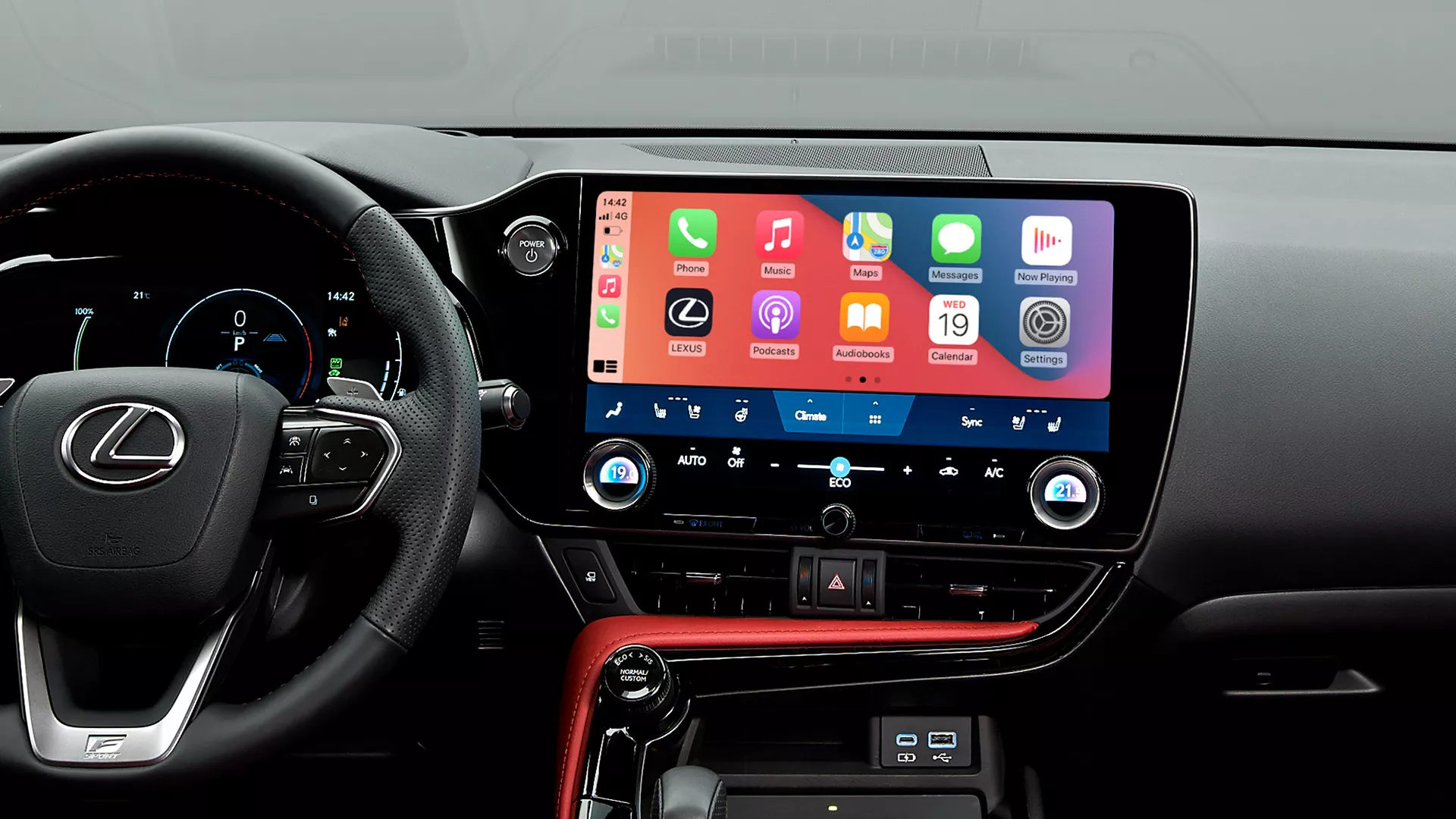
Toyota has also demonstrated its commitment to improving user experience through over-the-air updates, such as the recent change allowing native system shortcuts to remain accessible while using Apple CarPlay.
The system’s interface is visually appealing, responds quickly to inputs, and presents information in a clear, easy-to-read format without cluttering the screen with unnecessary features.
And if you ever have trouble locating a setting, the built-in search function whether by voice or text makes finding what you need effortless.
4. Lucid
- Vehicles: Lucid Air
Lucid takes a dual-screen approach, positioning a traditional touchscreen for primary functions such as navigation, media, and phone controls, while utilizing a separate lower display for vehicle-related settings and adjustments.
Unlike some EV manufacturers (cough, Tesla), Lucid includes both Apple CarPlay and Android Auto for seamless smartphone integration.
While the earliest versions of the Air experienced some software issues, more recent models have demonstrated significant improvements, with nearly flawless operation.
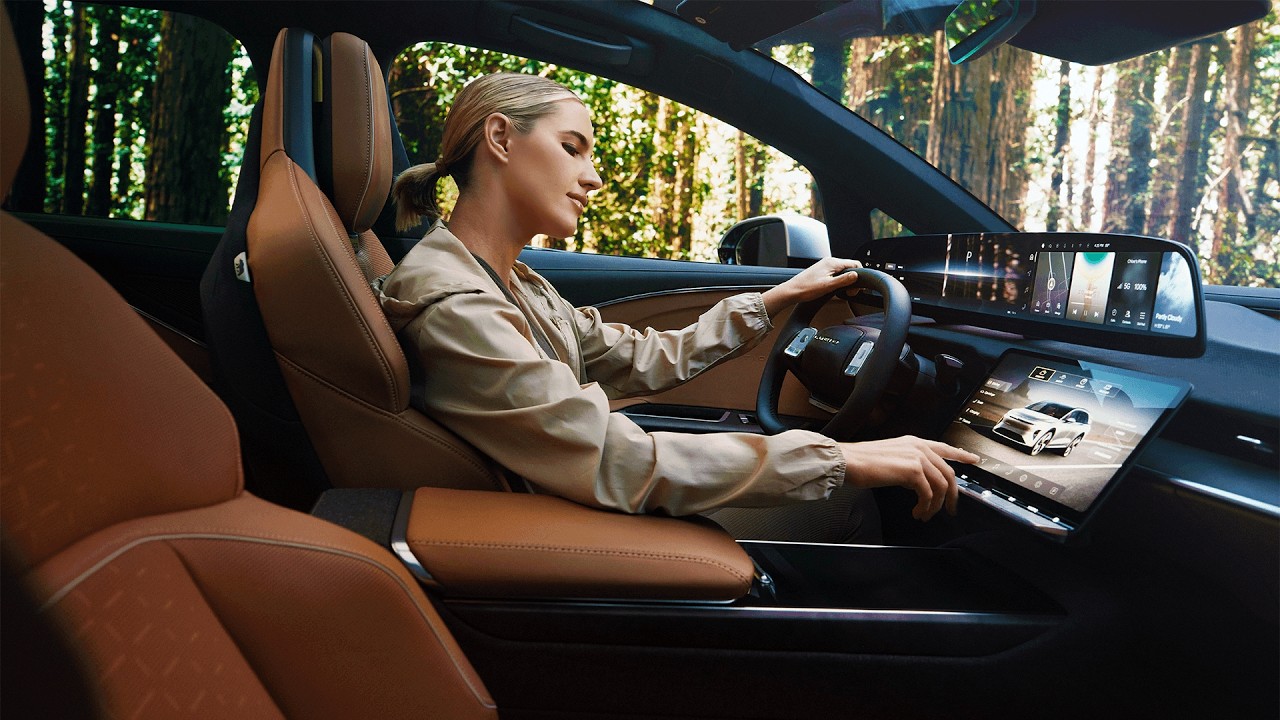
Now that the system is running smoothly, it serves as a prime example of how an infotainment setup can eliminate most physical buttons without sacrificing ease of use.
Fortunately, the Air still retains a volume scroll wheel and climate-control toggles, ensuring quick access to essential functions. Additionally, most settings remain just a tap away on the touchscreen.
With stunning, responsive displays, Lucid has set a high bar, and we’re eager to see how the brand continues to refine its infotainment experience with the upcoming Gravity SUV.
5. Ford / Lincoln Digital Experience
- Vehicles: Ford Explorer, Lincoln Aviator
Android Automotive-based infotainment is becoming increasingly common, but Ford’s Digital Experience stands out as one of the best implementations of the system.
With Google Maps integrated as the default navigation and Google Assistant handling voice commands, you might find yourself questioning whether Apple CarPlay or Android Auto is even necessary.
Unlike GM, which has eliminated these smartphone integration options entirely, Ford continues to offer them because having a choice is always a plus.
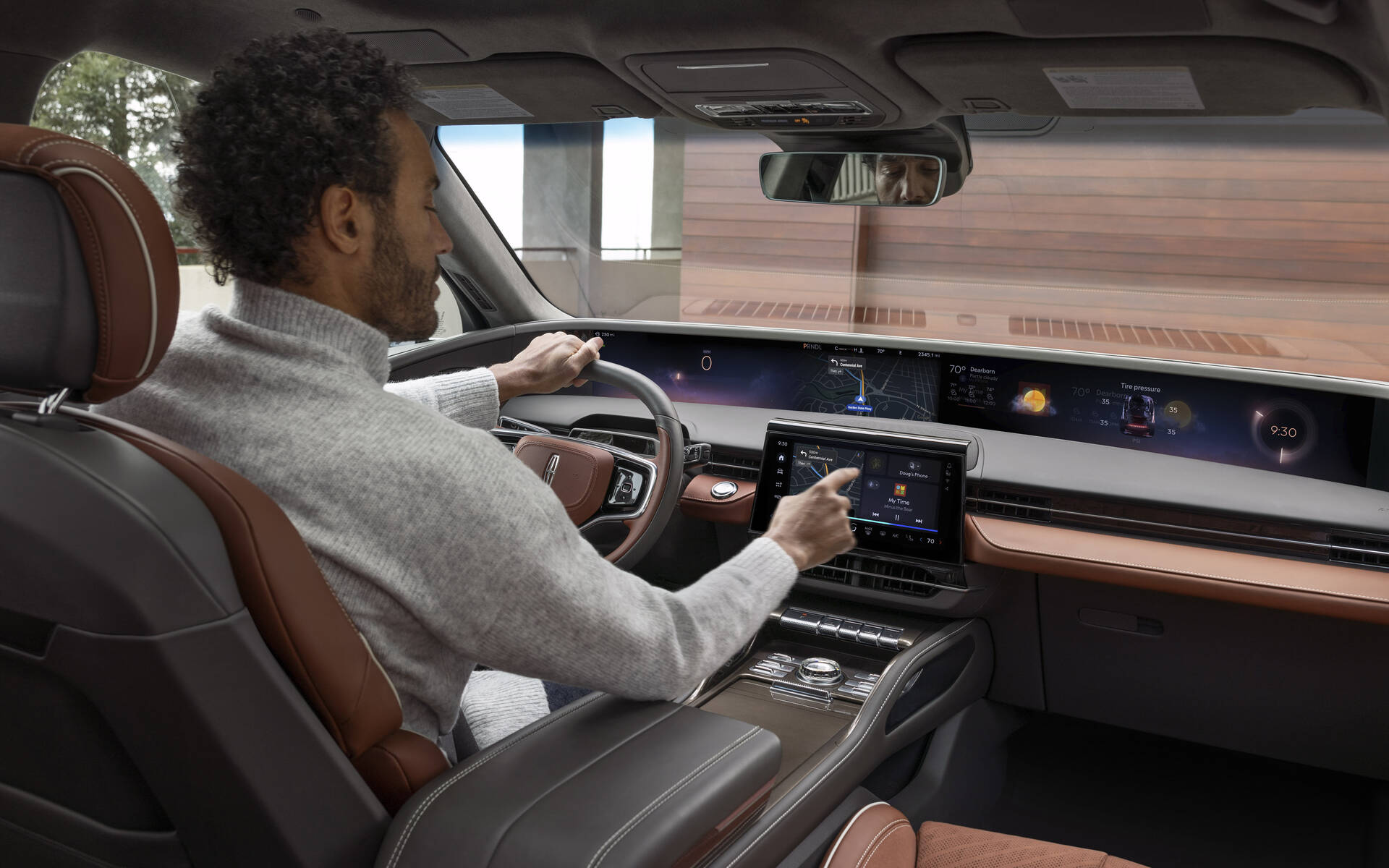
A major highlight is the ability to display Google Maps directly in the digital instrument cluster, a feature that feels particularly well-executed in both the Explorer and Aviator.
While the Lincoln Nautilus also utilizes a similar system with its distinctive full-width windshield display, some ergonomic missteps prevent it from delivering the same seamless experience.
As a result, the more conventional but highly refined version in the Explorer and Aviator remains the superior option.
Also Read: Top 10 Best Cars That Can Run Over 300,000 Miles
6. Mazda Connect
- Vehicles: Mazda CX-90, Mazda CX-70
Mazda employs the same infotainment software across its lineup, but the experience is at its best in the CX-90 and CX-70, thanks to their expansive 12.3-inch display.
Similar to BMW, the standout feature here is the rotary control knob on the center console, which is seamlessly integrated with the native software.
This knob remains useful even when using Apple CarPlay or Android Auto, as the dedicated hard buttons for navigation, media, and other functions provide instant access to the corresponding smartphone apps.
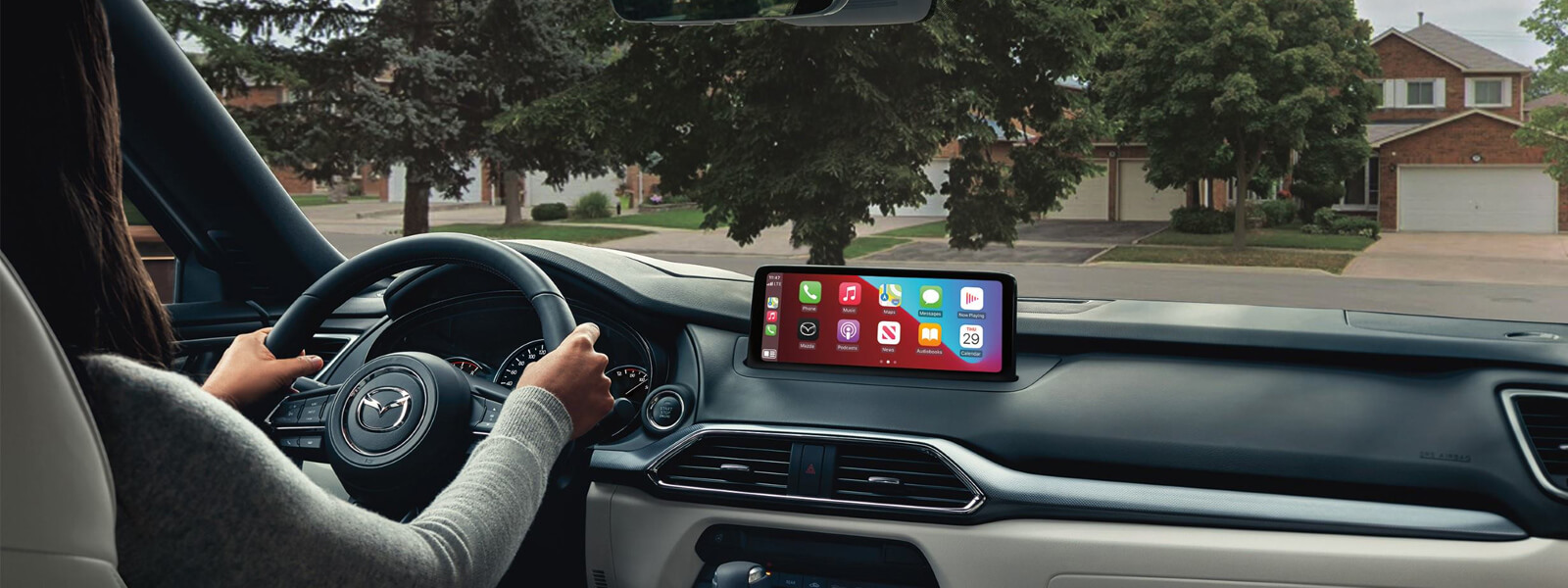
In many cases, this setup is actually faster than a touchscreen and safer, as Mazda positions its screens higher in the driver’s field of vision compared to most competitors.
While the CX-90 does include touchscreen functionality, it is only accessible when using CarPlay or Android Auto, maintaining Mazda’s preference for a more controlled, distraction-free interface.
7. Volvo with Google Built-In
- Vehicles: Volvo S60, V60, S90, V90, XC40, XC60, XC90, C40 Recharge
Volvo is another automaker that has successfully integrated Google Built-In software into its infotainment system. It delivers the brand’s signature Scandinavian minimalist luxury, enhanced by Google Maps for navigation and Google Assistant for voice control.
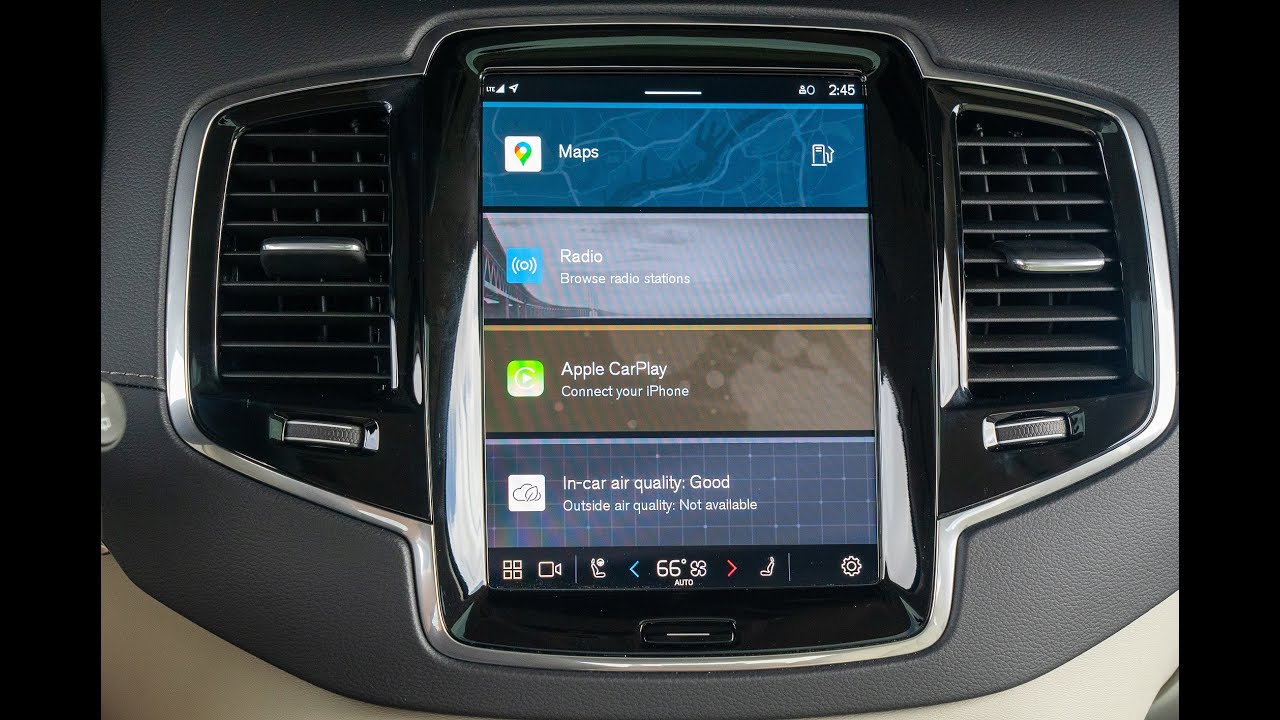
Much like Ford’s implementation, Volvo’s inclusion of Google Maps in the instrument cluster is a standout feature, minimizing the need to interact with the elegant, vertically oriented touchscreen while driving.
However, the biggest drawback of this system is Volvo’s decision to bury drive mode selection within the screen incorporating more physical buttons alongside digital functions would elevate this infotainment setup to a truly top-tier experience.
8. Hyundai ccNC
- Vehicles: Hyundai Sonata, Kona, Tucson, Santa Fe, Santa Cruz, Ioniq 5
Hyundai’s latest infotainment system oddly named ccNC finally includes wireless Apple CarPlay and Android Auto, a long-overdue addition considering most competitors adopted the technology years ago.
This upgrade enhances an already well-designed system, which features a layout similar to BMW’s, integrating both the instrument cluster and infotainment display into a single large curved screen.
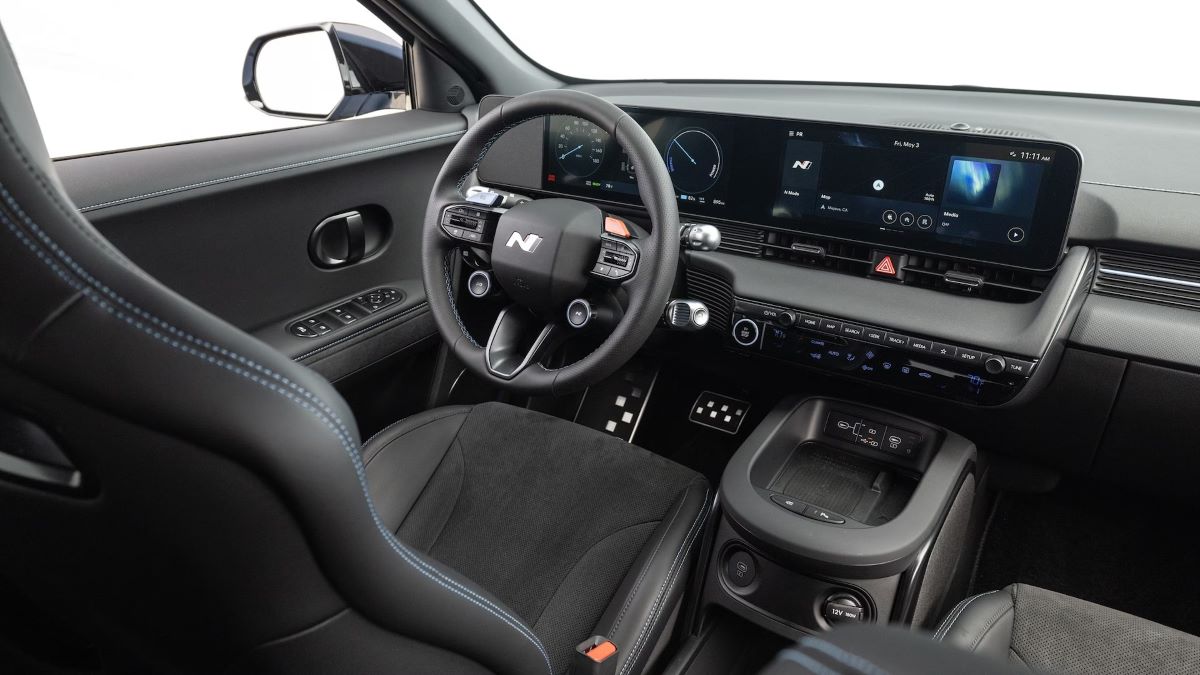
The interface utilizes a clean tile-based menu structure, making it one of the most intuitive systems available.
Hyundai also strikes a great balance between digital and physical controls, ensuring that users don’t have to rely solely on the touchscreen for basic climate or audio functions.
Dedicated hard buttons remain for essential tasks, including track skipping and a customizable “Favorite” button, which provides quick access to frequently used apps.
9. Kia ccNC
- Vehicles: Kia K4, K5, Sorento, EV6, EV9
Kia’s infotainment system is nearly identical to Hyundai’s, but it features a slightly different visual design to align with Kia’s sharper, more angular aesthetic.
While the core functionality remains the same, Kia introduces a unique multi-function action bar in models like the EV6, K5, and Sorento, setting it apart in a subtle yet notable way.
This bar allows users to toggle between radio/navigation and climate control, effectively consolidating multiple “physical” controls into a more compact space.
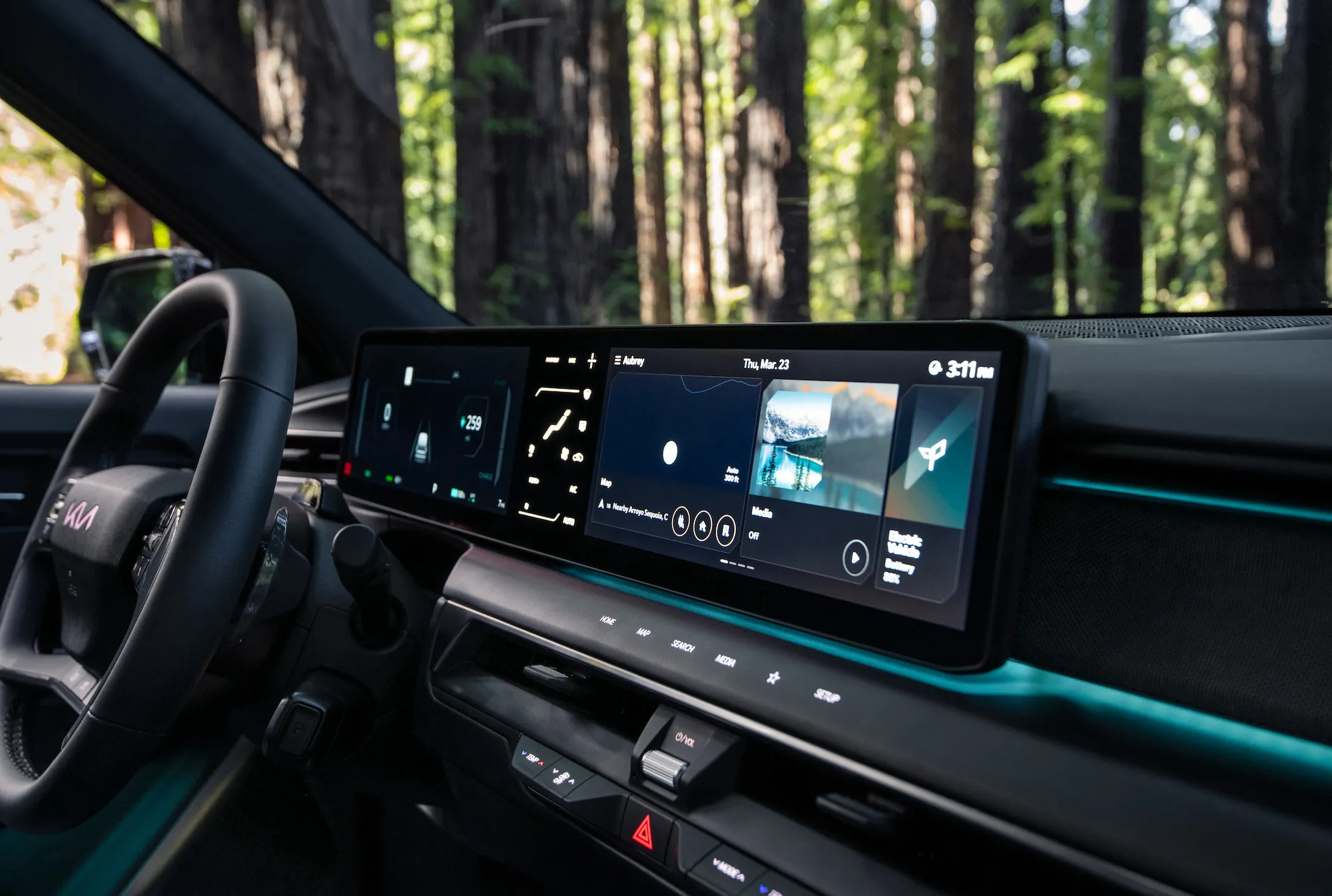
Though it may take some time to get used to, it proves to be a convenient feature once mastered. Meanwhile, the EV9 employs the same infotainment system but introduces a separate climate panel positioned between the screens.
While this layout may feel unconventional, Kia has still integrated traditional climate controls in the EV9, ensuring ease of use.
10. Porsche Driver Experience
- Vehicles: Porsche Macan EV
The Macan EV debuts an entirely new infotainment system for Porsche, featuring the most advanced Apple CarPlay and Android Auto integration yet.
It allows users to project Apple Maps or Google Maps directly into the instrument cluster as a full-screen display something typically reserved for Android Automotive-based systems with native Google Maps.
However, the Macan EV achieves this simply by connecting a smartphone. The system is incredibly responsive, offering a significant improvement over previous Porsche infotainment setups in both layout and ease of use.

Additionally, Porsche maintains its commitment to physical controls, with an array of dedicated climate buttons positioned below the well-proportioned 10.9-inch touchscreen.
While not a decisive factor in ranking this system, the Macan EV also includes an optional passenger screen packed with useful features, adding to its premium experience.

